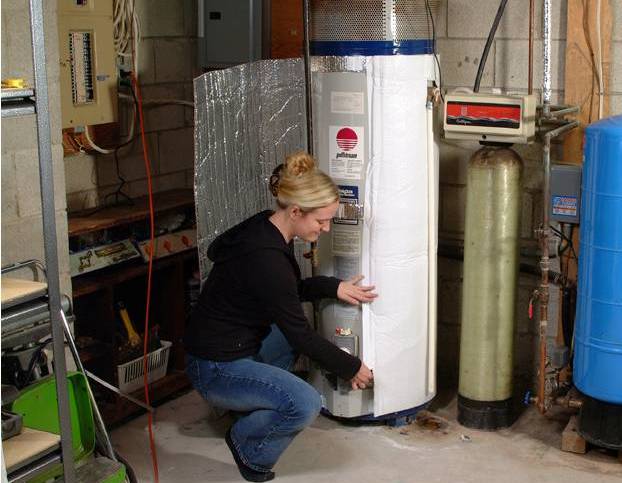Blog Post
Improving Water Heater Efficiency

Last week I wrote about a high-tech solution for water heating--heat-pump water heaters that can cut costs by more than half compared to conventional electric water heating. This week, I'll address the low-tech efficiency side of water heating.
First, some context: in a typical American home, according to the U.S. Department of Energy, water heating accounts for about 16% of total annual energy expenditures--a little more than for air conditioning, on a national-average basis, and twice as much as is used for refrigerators. An average American family pumps nearly 3,000 pounds of carbon dioxide into the atmosphere each year from heating water, a not-insignificant contributor to global warming.
The two easiest ways to reduce your energy use for hot water are to a) use less hot water, and b) reduce heat loss in your water heating and hot water distribution systems. We'll take a look at each of these in turn.
Reducing hot water use:
- Replace older showerheads with new, low-flow models. Expect to spend about $25 for a good model that delivers a satisfactory shower with as little as 1.6 gallons per minute.
- Fix any leaking faucets or showerheads.
- Replace aerators on bathroom faucets with products that have a flow rate of no more than one gallon per minute.
- Wash laundry in cold water, or at least use a cold-water rinse.
- Reduce waste in washing dishes. Most modern dishwashers don't require that dishes be rinsed; just scrape off food. If you must rinse, use cold water.
- If you're replacing a dishwasher, buy an Energy Star model.
If you're replacing your clothes washer, buy an Energy Star, horizontal-axis (front-loading) model.
Reducing waste in heating and distributing hot water:
SUPPORT INDEPENDENT SUSTAINABILITY REPORTING
BuildingGreen relies on our premium members, not on advertisers. Help make our work possible.
See membership options »- Insulate your water heater. If you have a storage-type water heater, adding additional insulation will reduce heat loss from it. Follow manufacturer's recommendations on insulation, especially with gas-fired water heaters (to avoid blocking the air inlet).
- Insulate hot water pipes. If the water sitting in your hot water pipes stays warm after you run the tap, there's greater likelihood that you won't waste water and energy the next time you turn on the hot water. In new construction, all hot water pipes should be insulated (I even recommend insulting cold-water pipes to reduce condensation and dripping in the summer). In existing houses, insulating pipes can be quite difficult and may not be worth the effort, except for those that are readily accessible--such as in a basement.
- Install "heat traps" or "anti-convection valves" on the hot and cold water connections to your water heater. These simple devices prevent "thermosiphoning" of heat out of the water heater.
Some new water heaters include built-in heat traps.
- Turn down the temperature setting on your water heater. If your water heater is currently set to 140 degrees F, decreasing it to 120 degrees (about midway between the "medium" and "low" setting on most water heaters) should reduce your energy use for water heating by 6-10 percent. Due to concern about Legionella bacteria, which can live in lukewarm water, some people recommend keeping a water heater set to at least 130 degrees.
- Install an "on-demand circulator" under bathroom or kitchen sinks that are located far from the water heater. This is a user-activated pump that brings hot water to the point-of-use and returns water that's been sitting in the hot water pipe back to the water heater. See my Energy Solutions column, "Waiting for Hot Water," from June, 2009 for more on this strategy.
Once you've invested effort in reducing hot water use and minimizing losses in your water heating system, an alternative system--such as a solar water heater--will be able to satisfy a larger fraction of your needs and can be kept smaller (and more affordable). "Efficiency first" is almost always the best investment.
I invite you to share your comments on this blog. You can also follow my musings on Twitter.
Published October 20, 2009 Permalink Citation
(2009, October 20). Improving Water Heater Efficiency. Retrieved from https://www.buildinggreen.com/blog/improving-water-heater-efficiency



Add new comment
To post a comment, you need to register for a BuildingGreen Basic membership (free) or login to your existing profile.